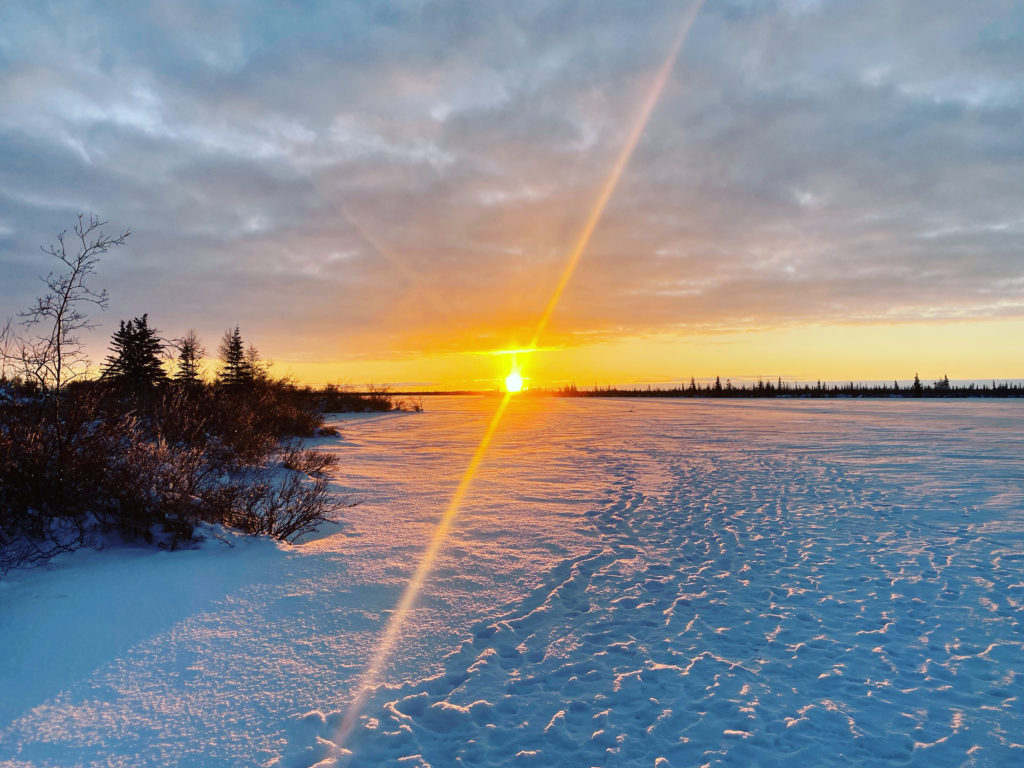November is a thrilling time at our lodges: Polar bears are gathering in the area to wait for the temperatures to drop, so they can travel onto the ice of Hudson Bay to hunt. The snow has begun falling and the land is turning white. On clear nights the aurora often dances in the dark sky.
But even as action is happening all around—something else is going on.

Photo by Nolan Booth
As the days grow colder (the average maximum daytime temperature in November is around -8.0°C (17.6°F)) the sun shines less and snow flurries darken the skies. The Northern Hemisphere is continuing to move further from the sun and daylight hours will drop from nine to just over six. Soon the polar bears will have dispersed out onto the ice.
And while polar bears don’t hibernate, you could say that our lodges do.
Not long after our last guests leave, the lodges undergo a transformation in order to close for the season. If you’ve ever shut up a summer cottage—you may have an idea of the work that goes into securing a building up for the winter. But our lodges also have to be fortified against determined bears and blizzards that can bring winds of 120 km/hr and dump 60 cm of snow, creating huge drifts.
To keep everything safe for next year, our staff works through a detailed checklist. First is the deep clean—the cozy rooms, welcoming lounges and dining rooms where all those hearty meals were enjoyed are scrubbed clean. And all the perishable food is packed up to carry out.

Photo by Nolan Booth
Then it’s time to start shutting down. We unplug all the lamps, night lights, appliances and electrical devices. Batteries are removed from smoke alarms and CO2 detectors, and the ice machine, coffee machines and irons are drained and dried.
Without heat—water will freeze solid, bursting pipes and doing damage. So winterizing our water system only just starts when we turn off the pressure pump. After filling some emergency jugs—all the tanks and lines are emptied. We even empty the water lines to the washing machines and flush away all the water out of the toilet system, and then use a shop vac to suck them dry!
As our buildings are closed up and everything is secured, we move outside. Outdoor furniture comes in and we board up the windows with super-study bear boards. Outdoor equipment also gets special care—so it’s all ready to go when we get back. Fuel stabilizer is added to gas tanks, the oil is topped up and all moving parts get lubricated.
One of the last things we do is double-check that everything is ready for our return. The jugs of emergency water are stored on their sides. We stock the kitchen with dry and freezable canned goods, as well as First Aid Kits and winter linens for 6-8 people.
The buildings will be cold when people return—and it will take some time to open them back up and get all the systems running—so departing staff fill up all the wood boxes and make sure to include plenty of kindling.
We’ll be gone from the lodges for a few months but when the bears come back—so will we. We can’t wait.

Photo by Nolan Booth










I visit that enchanted place on 2019. Since that I ‘m a subscriber of many lists about the polar bears. I reallu hope to be back someday!
Enjoy your time off once you complete all that work. Even tho we did not have a bear siting, we loved the experience & hope to return in a few years to try again. We need to check polar bears off our bucket list! Thanks to the letters written by your staff, we were able to get a refund for weather interruption from our insurance company. Much appreciated! Happy Holidays, Nolan. Sylvia & John Williams